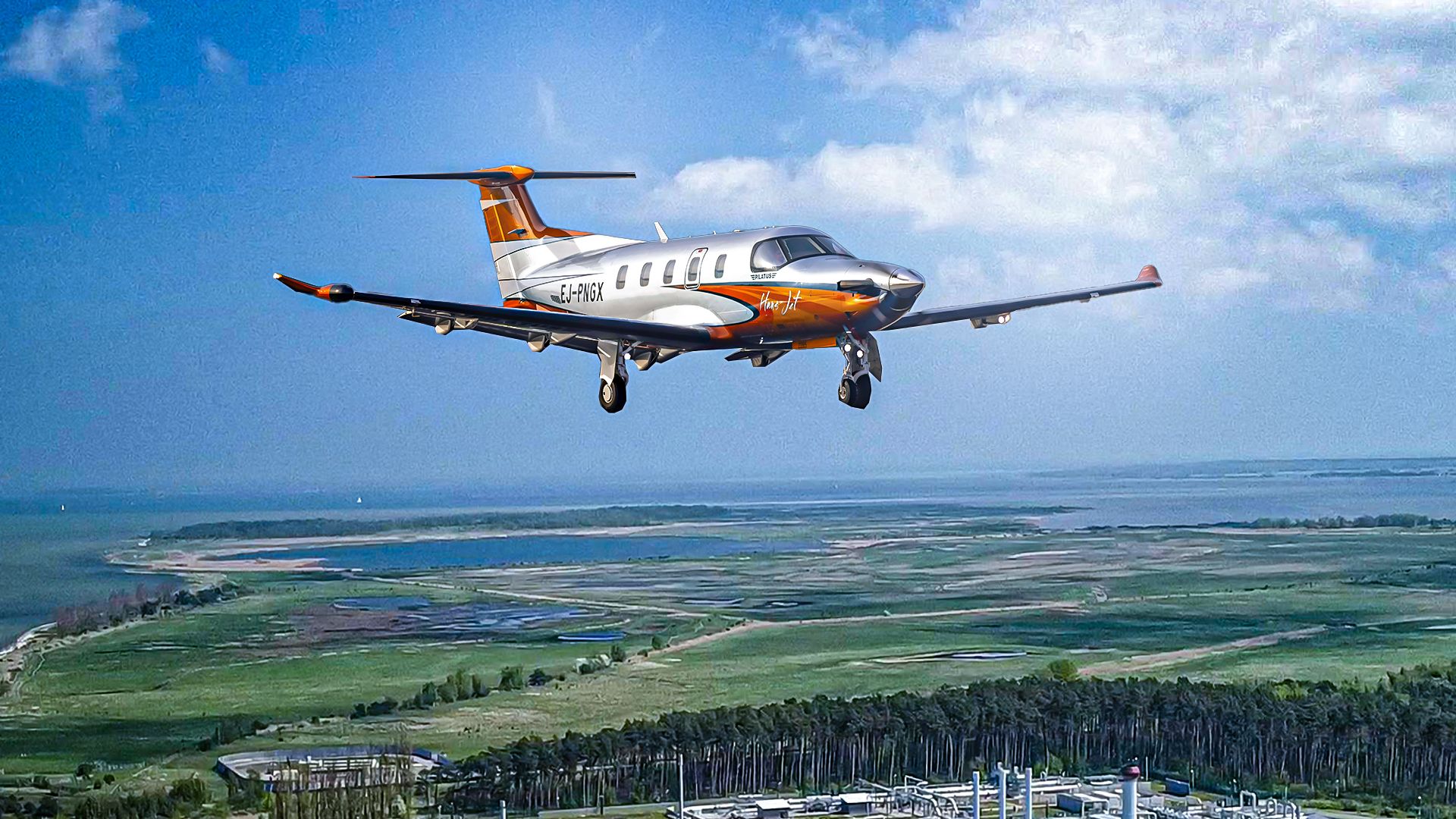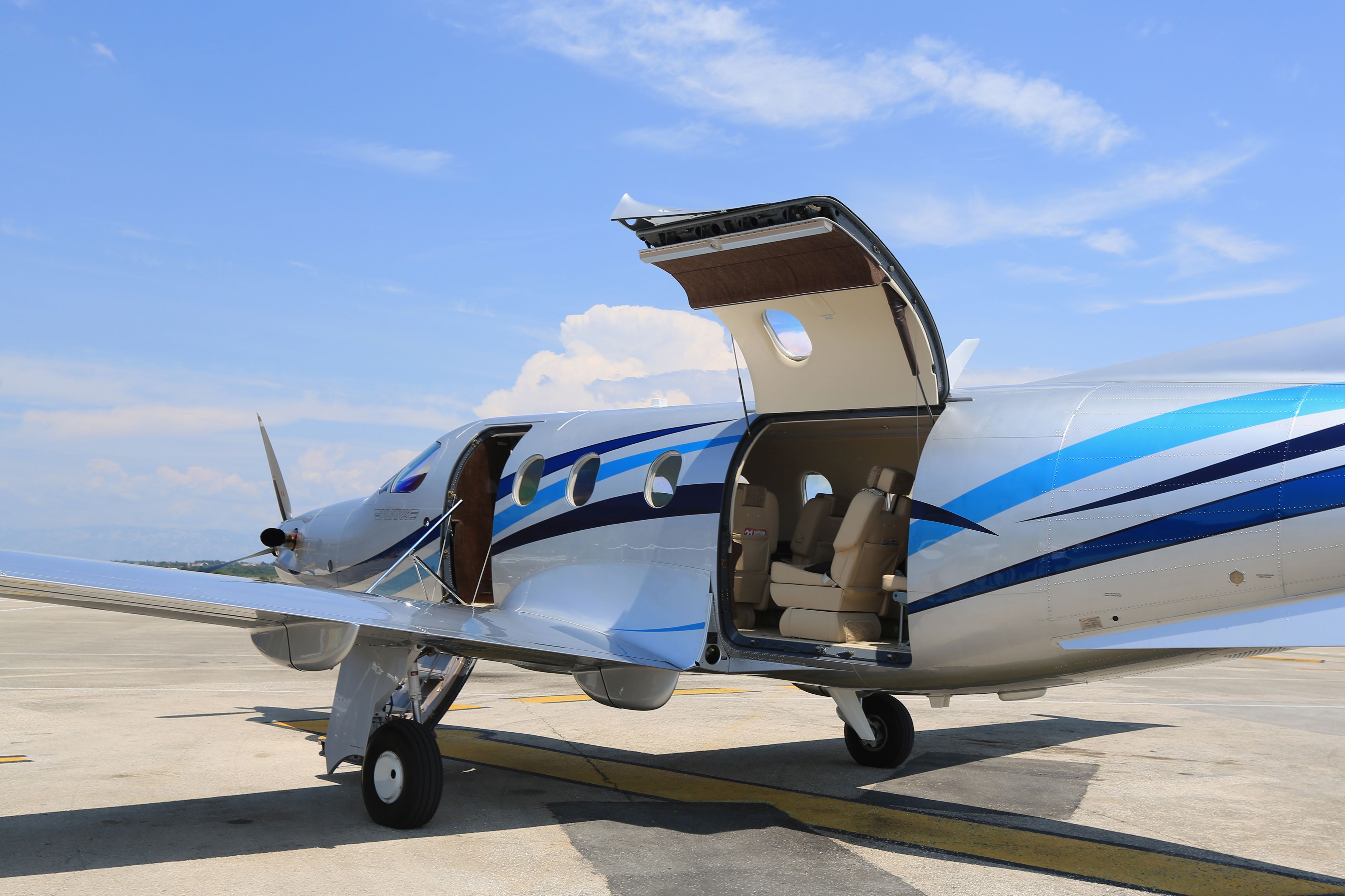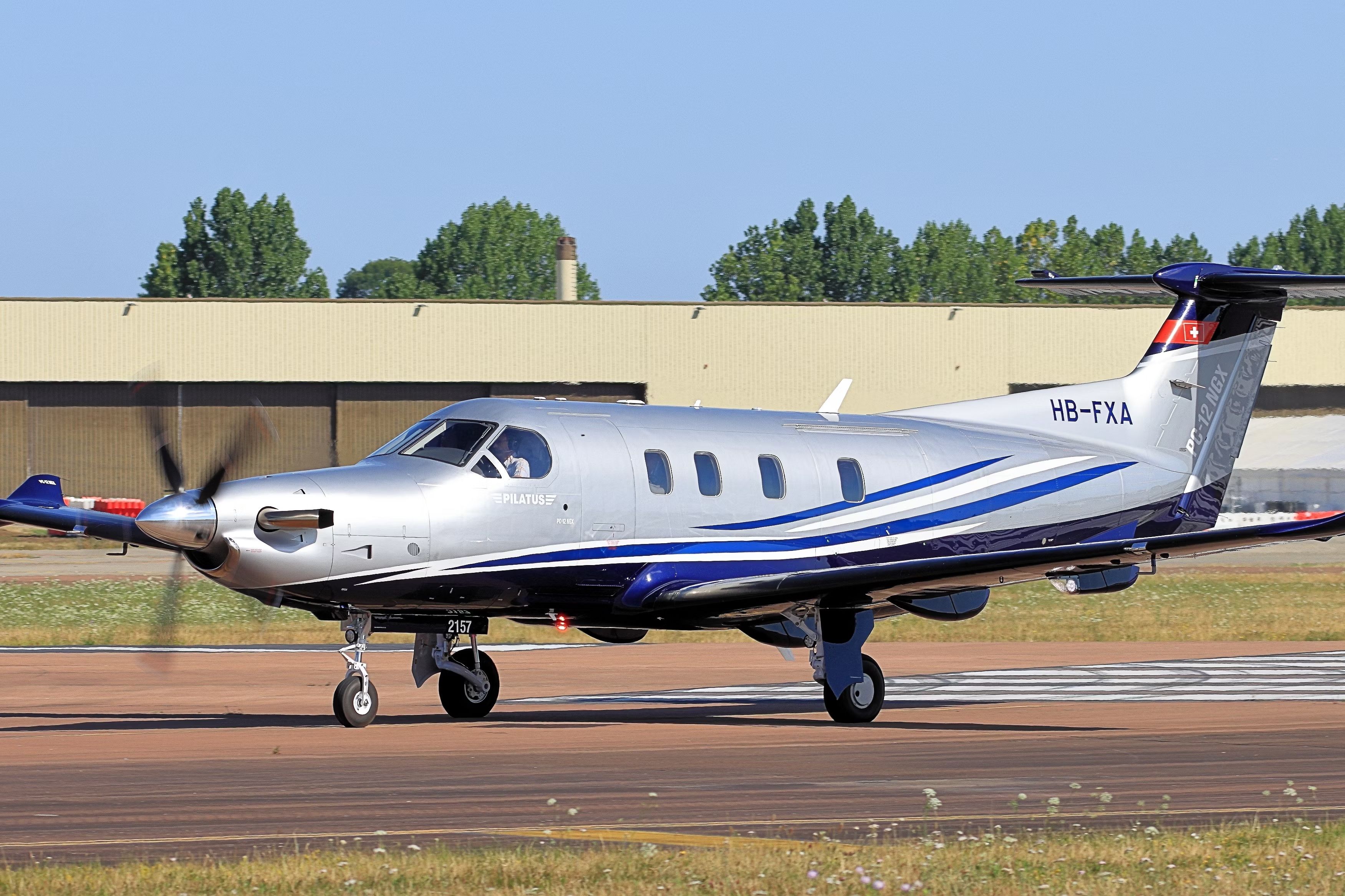The Pilatus PC-12, a single-engine pressurized turboprop aircraft manufactured by the Swiss Pilatus Aircraft company, has been one of the leading single-engine turboprop aircraft since it first took to the skies in 1991. Initially built to be a high-performance utility aircraft, the eventual incorporation of a large rear cargo door has made the aircraft endlessly versatile, and the plane has been used around the globe for dozens of different purposes.
Designed with nothing but efficiency in mind, the aircraft has been used for everything from air-ambulance operations to search-and-rescue (SAR) missions to corporate transportation and private recreational flying. Furthermore, variants of the aircraft have entered service with military operators across the globe, and the plane remains in service today with the United States Air Force as the U-28A Draco. Some variants of the single-engine plane have even entered commercial service with a few small regional airlines.
An aircraft model that gave birth to a private turboprop family
Originally launched in 1989, the Pilatus PC-12
has been one of the most successful single-engine turboprop aircraft of all time, with over 2,000 built as of last year, according to FlightGlobal. The original variant, which had brought commercial success to manufacturer Pilatus for over a decade, was beginning to show signs of its age by the time July 1994 came around.
In 2006, Pilatus decided it was time to upgrade its aircraft, launching the PC-12 Next Generation (stylized as PC-12NG) at the National Business Aviation Association’s annual convention in Orlando that year. With dozens of improvements over its predecessor, the aircraft was immediately successful, and saw over 200 orders pour in within its first two years on the market alone. Let’s take a deeper look at everything this upgraded Pilatus aircraft brought to the table nearly two decades ago.

A new variant that brought a lot to the table
While announced at the 2006 NBAA convention, the Pilatus PC-12NG was officially launched at the following year’s convention, which was held in Atlanta. The primary upgrade that the Next Generation variant offered over its predecessor was a more capable Pratt & Whitney PT6A-67P engine, which would allow the aircraft to climb faster and achieve an even higher airspeed. With the new powerplant, the aircraft could reach speeds of over 320 miles per hour.
The new aircraft’s advancements over its predecessor were not limited to the new engine, as it offered a state-of-the-art Honeywell Primus Apex cockpit, which replaced older, less digitally integrated flight navigation systems. The new flight deck featured advanced pressurization controls and cursor-controlled inputs, which made the aircraft far easier to fly.
Photo: Nadezda Murmakova | Shutterstock
Furthermore, the aircraft boasted improvements in operational efficiency beyond just those which were achieved by the new Pratt & Whitney engine. It offered next-generation winglets, which provided better aerodynamics that ultimately resulted in significantly improved fuel efficiency.
With such advanced capabilities, it is unsurprising that the PC-12NG soon became a bestseller among private and utility operators. Here are some specifications for the popular PC-12NG from manufacturer Pilatus:
|
Category |
Pilatus PC-12NG Specification |
|---|---|
|
Maximum Takeoff Weight (MTOW) |
10,450 |
|
Maximum speed |
~320 miles per hour |
|
Range |
2,123 miles |
|
Service ceiling |
30,000 feet |
New opportunities were created by the success of the PC-12NG
The success of the PC-12NG created multiple new opportunities for manufacturer Pilatus, which sought to modify the airframe to better serve niches within the market. A new variant, the PC-12M, which stands for Multipurpose, was a specialized variant equipped with stronger electrical systems that could support more power-consuming electronics.
This made the aircraft an ideal platform for air ambulance and surveillance purposes, as it could support the advanced machines and instruments needed for these kinds of missions. The PC-12M also offers another door on the side of the cabin which can be used for cargo and personnel parachute drops.
Pilatus soon used the success of the PC-12NG program to expand into the Asian market, with a new Chinese headquarters opening in 2012. The company quickly began manufacturing PC-12NG aircraft at this new facility and would later outsource the plane’s component production to the Indian Tata Aircraft Systems, which would begin building the fuselages.
Photo: Pilatus Aircraft
At the end of the day, the PC-12NG was not simply a new variant that improved on the relative success of its predecessor. It also offered game-changing improvements that cemented the aircraft’s role as a leading single-engine utility turboprop, and launched the manufacturer into the global market.
A new variant has been waiting in the wings
By 2019, the PC-12NG had brought the carrier impressive success, but was beginning to demonstrate its age and the need for a new variant. Therefore, at that year’s NBAA convention, the manufacturer announced the launch of the PC-12NGX, the next variant to enter its commercial lineup. A pleasant surprise to potential buyers, the Swiss planemaker announced that the new plane had already been certified.
The aircraft boasts a Pratt & Whitney PT6E-67XP turboprop engine, offering first-in-class dual-channel electronic propeller integration and control systems, which had previously been unheard of within the world of private aviation, according to the engine manufacturer. The new, more powerful engine is capable of pushing the single-engine aircraft to speeds of over 330 miles per hour.
The plane also features advanced Honeywell electronics, and an even further digitized cockpit. By continuing to invest in this popular aircraft, Pilatus Aircraft is ensuring that a stong successor exists within the market for the PC-12NG.







